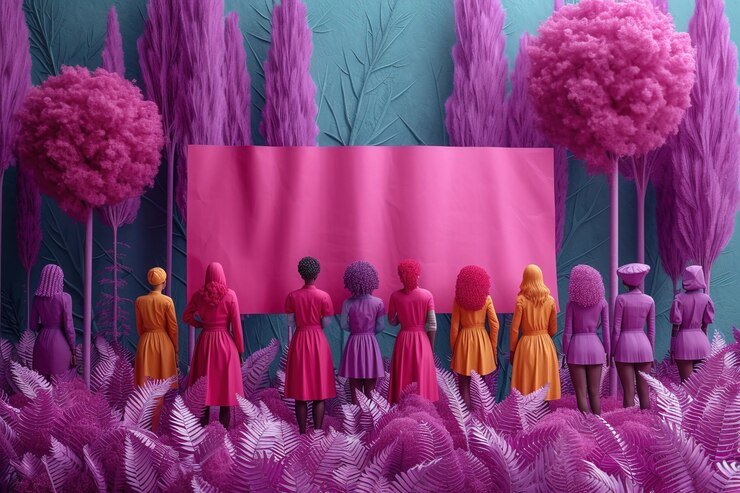In recent decades, 3D animation has transformed from a niche technology into a global phenomenon, impacting a wide range of industries, entertainment, and even our daily lives. From Hollywood blockbusters to interactive video games, and even cutting-edge product visualizations, 3D animation has reshaped the way we experience and interact with content. As animation technology evolves, its influence on culture continues to grow, introducing new methods of storytelling, artistic expression, and business innovation. This blog delves into the ways 3D animation has influenced culture, highlighting the role of 3D animation services and animation studios in Los Angeles, and examining how 3D product animation services contribute to various industries.
1. Redefining Entertainment and Storytelling
One of the most profound ways 3D animation has impacted culture is by transforming the entertainment industry, particularly film and television. Gone are the days when animated characters were drawn by hand or confined to 2D visuals. Today, animation studios, especially those in creative hubs like Los Angeles, are leveraging 3D animation services to create lifelike, immersive worlds that captivate audiences.
Movies like Toy Story, Avatar, and Frozen are just a few examples of how 3D animation has revolutionized storytelling. These films pushed the boundaries of what animation could achieve, not only in terms of visual quality but also in the depth of character development and the scale of the narratives. As a result, 3D animation has broadened the scope of storytelling, making it possible to depict complex themes, create new worlds, and develop characters that audiences can emotionally connect with.
2. Shaping Modern Video Games
Video games, once considered a form of entertainment for a niche group of enthusiasts, have become a mainstream cultural force. The rise of 3D animation in video games has played a significant role in this transformation. 3D environments, characters, and effects now define the gaming experience, making it possible for players to immerse themselves in digital worlds that feel as real as their own.
Games like The Last of Us, Grand Theft Auto V, and The Witcher 3 showcase the power of 3D animation in crafting realistic and emotionally engaging experiences. These titles rely heavily on 3D animation services to create lifelike movements, detailed landscapes, and compelling characters. The evolution of gaming graphics, driven by advances in 3D animation, has allowed games to become an art form that rivals traditional cinema in terms of visual storytelling and narrative depth.
3. Innovating Product Visualization and Advertising
The impact of 3D animation extends far beyond entertainment. In the business world, 3D product animation services have revolutionized how companies promote and sell their products. Rather than relying on static images or basic product videos, businesses can now showcase their products in stunning detail through 3D animations that allow potential customers to interact with the product from every angle.
This approach is particularly powerful in industries such as manufacturing, consumer electronics, and automotive, where a visual representation of the product’s features and functionality can make a significant difference in consumer decisions. 3D product animation services are now an essential tool for businesses to enhance their marketing strategies, providing visually engaging content that conveys the value and utility of their products in a way that static images or traditional advertising could never achieve.
For example, automobile manufacturers use 3D animation to showcase their latest car models in virtual environments, allowing customers to experience the vehicle from different perspectives without needing a physical prototype. Similarly, tech companies use 3D animation services to demonstrate the inner workings of their devices, helping consumers understand the functionality and appeal of their products.
4. Impact on Social Media and Online Content Creation
In the age of digital content, social media platforms like Instagram, TikTok, and YouTube have become cultural hubs where creativity and innovation thrive. 3D animation plays a crucial role in shaping online content, enabling creators to produce eye-catching visuals that stand out in the crowded digital landscape.
Influencers, brands, and independent creators are increasingly incorporating 3D animation into their social media posts and videos to capture attention and enhance their messages. Whether it’s using 3D characters for promotional content or integrating animated elements into music videos or short-form videos, 3D animation offers a versatile and powerful tool for digital storytelling. Animation studios, particularly those based in Los Angeles, are constantly experimenting with new techniques to push the boundaries of 3D animation, making it a vital part of digital culture.
5. 3D Animation in Education and Training
Another area where 3D animation has had a significant cultural impact is in the field of education and training. Educational institutions and organizations are increasingly turning to 3D animation to enhance learning experiences, particularly in complex subjects like anatomy, engineering, and science. By visualizing concepts in 3D, learners can gain a deeper understanding of abstract or intricate topics that are difficult to grasp through traditional teaching methods.
For example, medical students can use 3D models to study the human body, visualizing organs and systems from various angles and seeing how they interact in real-time. Similarly, companies use 3D product animation services to create interactive training materials for their employees, helping them understand how to use new machinery or software. This practical application of animation has transformed how we approach education, making learning more interactive and accessible.
6. The Rise of Virtual Reality (VR) and Augmented Reality (AR)
The convergence of 3D animations with virtual reality (VR) and augmented reality (AR) has opened up new cultural frontiers. VR and AR rely heavily on 3D animations to create immersive, interactive experiences. VR allows users to enter entirely virtual worlds, while AR enhances the real world with digital elements. Together, they have the potential to transform a wide range of industries, from gaming and entertainment to education and healthcare.
For example, VR applications in gaming provide users with fully immersive environments where they can interact with 3D animated characters and objects. AR, on the other hand, is being used in marketing campaigns, where consumers can interact with 3D models of products in their own environments using smartphones or AR glasses. This fusion of 3D animations with emerging technologies is shaping the future of how we experience content, creating entirely new cultural experiences that were once confined to science fiction.
7. Cultural Reflection and Global Reach
Finally, 3D animation’s influence on culture cannot be overlooked in terms of its global reach and ability to reflect and shape societal trends. Animated films and TV shows created with 3D animations are now enjoyed by audiences worldwide, transcending cultural and language barriers. The universal appeal of animation, combined with the increasingly global nature of the entertainment industry, allows stories to resonate with audiences from all walks of life.
The cultural exchange enabled by 3D animations is also contributing to the rise of international collaborations, with animation studios in places like Los Angeles, Japan, and South Korea working together to create content that blends diverse cultural influences. As animation continues to evolve, it will undoubtedly continue to reflect the changing dynamics of global culture.
Conclusion
3D animations has become an integral part of contemporary culture, influencing everything from entertainment and gaming to marketing and education. The ongoing advancements in 3D animations services are pushing the boundaries of creativity, opening up new possibilities for storytelling, product visualization, and digital innovation. Animation studios in Los Angeles play a pivotal role in driving this evolution, serving as the creative epicenter for the global animation industry. As technology continues to advance, the impact of 3D animations on culture will only grow, offering new ways for individuals, companies, and communities to connect, communicate, and create.












Leave a Reply